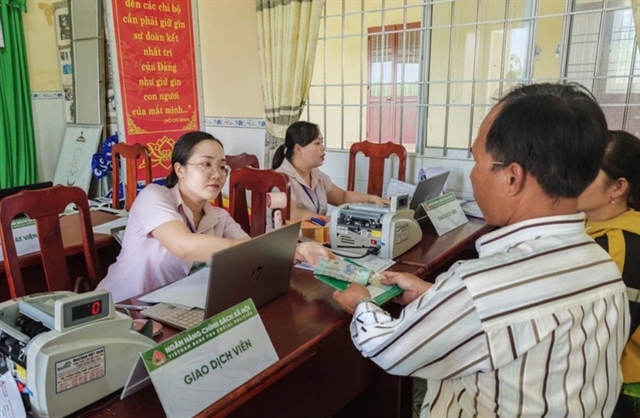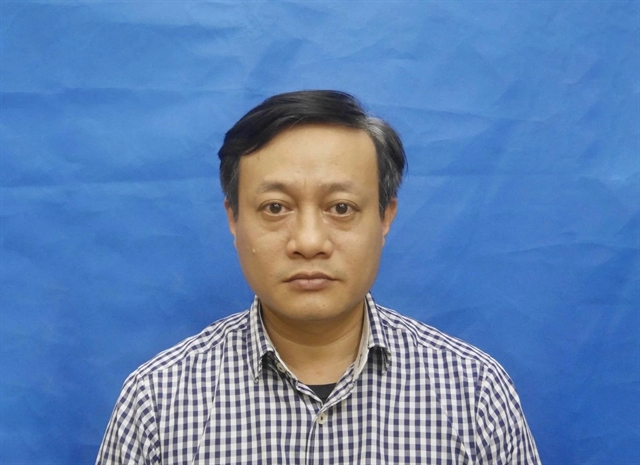 Media-OutReach Newswire
Media-OutReach Newswire

HONG KONG, CHINA - Media OutReach - 5 December 2018- Amgen and The Economist Intelligence Unit (EIU) today released acomprehensive new report entitled, "The Cost of Silence: Cardiovascular diseasein Asia." The report, which was developed by EIU and sponsored by Amgen,estimates that in the eight Asian economies studied, US$53bn of the total costsof primaryischaemic heart disease (IHD) and stroke are attributable to four modifiablerisk factors: smoking, hypertension, obesity and high cholesterol.




The white paper, which examines China,Japan, South Korea, Australia, Taiwan, Hong Kong, Singapore and Thailand, waslaunched over a media roundtable presented by The Economist's Rashmi Dalai,Managing Editor; and Amgen's Penny Wan, Regional Vice-President and GeneralManager, JAPAC.
"Silent" risk factors -- high cholesteroland hypertension -- are costinggovernments and health agencies across Asia billions of dollars every year,which together with smoking and obesity, threaten the sustainability ofhealthcare systems. The biggest challenge with these silent risk factors isthat individuals often have little knowledge of their underlying risks untilsymptoms become more pronounced, and the illnesses more advanced.
In addition, the risks of cardiovasculardisease (CVD), the general term for conditions affecting the heart or bloodvessels, are more elevated among older populations; as a result, countries withaging demographics face even greater challenges. This is a major issue in Asia,which is rapidly aging: in2016 approximately 12.4% of Asia's population was 60 years of age or older.[i] This proportion is projected to increase to more than a quarter by 2050.[ii] How countries in the region address the CVD burden has enormous economic andhuman implications. For example, the recurrence rates for people suffering froma CVD event are high. Prioritising at-risk groups, where the cost for treatmentcan be significant, will help drive positive impact on CVD cost management.
CVD is already the leading cause ofdeath globally and it is estimated that half the cases of CVD occur in Asia[iii].The economic burdens of these conditions are rising dramatically, as the reportfound:
In addition, the report found a lack ofawareness among Asian populations of the risks and symptoms of CVD, an issuethat has serious health and economic consequences. The danger from lack of awarenessand poor information can lead patients to make bad decisions, such asdiscontinuing treatments.
Theconsequences of insufficient awareness are also reflected by patients failingto take steps to treat CVD in its early stages. If early warning signs wereaddressed, treatments would be easier and cheaper. Lifestyle changes andmedications are convenient and cost-effective ways to manage CVD, and theyreduce the chance of life threatening incidences. However, most importantly, bycreating more awareness of early symptoms and diagnosing silent risks, it is possibleto prevent illnesses such as CVD. Penny Wan, Regional VP and General Manager,JAPAC at Amgen, explained further:
"As a leadingglobal biopharmaceutical company, understanding the healthcare landscape anddemographic trends in Asia are critical to Amgen's mission to serve patients.Looking at this part of the world, we see how aging populations are puttingpressure on economies and amplifying risk factors for illnesses such as CVD. Weare dedicated to changing the trajectory of healthcare, and our innovativemedicines make a difference to ensure people live healthier, longer lives.
However, as wesee in this report, more needs to be done to improve awareness of CVD risks,while shifting away from treating illnesses, towards predicting and preventingconditions before they become life-threatening. Through multi-stakeholdercollaborations, we can change behavior and transform healthcare systems tocreate a new 'predict and prevent paradigm' that is a better, safer and morecost-effective way to address CVD in the face of demographic headwinds."
Speaking on thereport, and the silent CVD risks it highlights, Rohan Greenland, President ofthe Asia Pacific Heart Network (APHN), said: "The Asia-Pacific is facing acardiovascular crisis on an immense scale. All governments need to do much moreto prevent and control CVD, starting with national action plans as a key partof a comprehensive response to tackle non-communicable disease. Modifiable riskfactors including smoking, physical inactivity and overweight/obesity need tobe aggressively addressed. Alarming rates of high blood cholesterol and highblood pressure - silent killers - also need to be countered through appropriaterisk assessment, treatment and on-going management."
Singapore
There areseveral key takeaways specific for Singapore. Of the four risk factors, thepopulation attributable fractions (PAFs) for hypertension in men and highcholesterol in women indicate that eliminating these risk factors in thepopulation would reduce CVD incidence by 11% and 13% respectively.
CVDs levy$8.1bn in direct and indirect costs on individuals, their households and thepublic finances, with the four modifiable risk factors accounting for anestimated US$4.9bn or 60% of the total.
Japan
A rise in theprevalence of hypercholesterolemia, widely linked with changing diets andincreasingly sedentary lifestyles, also suggests a gradual increase inincidence of ischaemic heart disease over a longer time frame.[iv] While stroke's mortality rate hasdecreased over recent decades, it remains one of the leading causes of deathand disability. The incidence of CVD in men could be reduced by over 20% ifhypertension and smoking were eliminated. Eliminating hypertension and highcholesterol in women would have a similar effect on their CVD incidence rate.
CVDs levy$24.3bn in direct and indirect costs on individuals, their households and thepublic finances, with the four modifiable risk factors accounting for US$15.9bnor approximately 65% of the total.
Hong Kong
Ischemic heartdisease is the third leading cause of death in Hong Kong, and while mortalityrates are falling, incidence rates are not. Ischemic heart disease is on therise due to growing proportion of older people, diminished physical activityand susceptibility to obesity from dietary causes. In 2016, 11 people died fromcoronary heart disease per day with a male/female ratio of 1.5:1.[v]The incidence of CVD in men could be reduced by 15% if hypertension waseliminated. For women, this would reduce their CVD incidence by 10%.
CVDs levy$4.8bn in direct and indirect costs on individuals, their households and thepublic finances, with the four modifiable risk factors accounting for anestimated US$3.1bn or approximately 65% of the total.
Thailand
Ischaemic heartdisease is the number one cause of mortality in Thailand, according to WHOestimates.[vi] Hypertension is the most prevalent riskfactor for both genders.
CVDs levy$1.3bn in direct and indirect costs on individuals, their households and thepublic finances, with the four modifiable risk factors accounting for anestimated US$1.0bn or approximately 77% of the total.
Australia
CVD remains thenumber one cause of death in the country and the leading cause of prematuredeath. High cholesterol is the leading modifiable risk factor in terms ofprevalence in Australia for men and women respectively. Of the four riskfactors, high cholesterol has the highest PAF for both genders.
These diseasesimpose US$12.3bn in direct and indirect costs on individuals, their householdsand the public finances, with the four modifiable risk factors accounting forUS$7.5bn or 61% of the total.
China
Ischaemic heartdisease has, over the last thirty years, been the single fastest riser amongcauses of premature death in China, from seventh in 1990 to second, behindstroke, by 2010.[vii] Stroke is the leading cause of family povertyin rural China.[viii]
Risk factors,including age and obesity, have combined with environmental issues such asambient particulate air pollution to drive ischaemic heart disease-relatedhospital admissions, particularly in urban centres. Hypertension is ofparticular concern for both genders, reducing this risk factor would reduce CVDincidence by 13% for men and 12% for women.
CVDs levy$21.7bn in direct and indirect costs on individuals, their households and thepublic finances, with the four modifiable risk factors accounting for US$13.6bnor approximately 63% of the total.
South Korea
Stroke is thedominant CVD nationally with limited reduction in risk factors over recentdecades. According to EIU, high cholesterol has the highest PAF amongst women.
CVDs levy$7.2bn in direct and indirect costs on individuals, their households and thepublic finances, with the four modifiable risk factors accounting for US$4.0bnor approximately 56% of the total.
Taiwan
Low levels ofphysical activity, associated with risks of high blood pressure andcholesterol, and a higher sodium intake due to a contemporary diet, are allbroader trends of concern. Stroke was the leading cause of death in Taiwan in2014. Of the four risk factors, hypertension's PAF is highest for both genders;reducing this risk factor would decrease CVD incidence by around 10% for menand women.
CVDs levyUS$4.7bn in direct and indirect costs on individuals, their households and thepublic finances, with the four modifiable risk factors accounting for US$2.7bnor approximately 57% of the total.
The fullreport, "The Cost of Silence: Cardiovascular disease in Asia", can bedownloaded here: https://eiuperspectives.economist.com/healthcare/cost-silence/white-paper/cost-silence-cardiovascular-disease-asia
About Amgen
Amgen iscommitted to unlocking the potential of biology for patients suffering fromserious illnesses by discovering, developing, manufacturing and deliveringinnovative human therapeutics. This approach begins by using tools likeadvanced human genetics to unravel the complexities of disease and understandthe fundamentals of human biology.
Amgenfocuses on areas of high unmet medical need and leverages its expertise tostrive for solutions that improve health outcomes and dramatically improve people'slives. A biotechnology pioneer since 1980, Amgen has grown to be one of theworld's leading independent biotechnology companies, has reached millions ofpatients around the world and is developing a pipeline of medicines withbreakaway potential.
Formore information, visit www.amgen.com and follow us on www.twitter.com/amgen .
Forward-Looking Statements
This news release containsforward-looking statements that are based on the current expectations andbeliefs of Amgen. All statements, other than statements of historical fact, arestatements that could be deemed forward-looking statements, including estimatesof revenues, operating margins, capital expenditures, cash, other financialmetrics, expected legal, arbitration, political, regulatory or clinical resultsor practices, customer and prescriber patterns or practices, reimbursementactivities and outcomes and other such estimates and results. Forward-lookingstatements involve significant risks and uncertainties, including thosediscussed below and more fully described in the Securities and ExchangeCommission reports filed by Amgen, including our most recent annual report onForm 10-K and any subsequent periodic reports on Form 10-Q and Form 8-K. Unlessotherwise noted, Amgen is providing this information as of the date of thisnews release and does not undertake any obligation to update any forward-lookingstatements contained in this document as a result of new information, futureevents or otherwise.
No forward-looking statementcan be guaranteed and actual results may differ materially from those weproject. Our results may be affected by our ability to successfully market bothnew and existing products domestically and internationally, clinical andregulatory developments involving current and future products, sales growth ofrecently launched products, competition from other products including biosimilars,difficulties or delays in manufacturing our products and global economicconditions. In addition, sales of our products are affected by pricingpressure, political and public scrutiny and reimbursement policies imposed bythird-party payers, including governments, private insurance plans and managedcare providers and may be affected by regulatory, clinical and guidelinedevelopments and domestic and international trends toward managed care andhealthcare cost containment. Furthermore, our research, testing, pricing,marketing and other operations are subject to extensive regulation by domesticand foreign government regulatory authorities. We or others could identifysafety, side effects or manufacturing problems with our products after they areon the market. Our business may be impacted by government investigations,litigation and product liability claims. In addition, our business may beimpacted by the adoption of new tax legislation or exposure to additional taxliabilities. If we fail to meet the compliance obligations in the corporateintegrity agreement between us and the U.S. government, we could become subjectto significant sanctions. Further, while we routinely obtain patents for ourproducts and technology, the protection offered by our patents and patentapplications may be challenged, invalidated or circumvented by our competitors,or we may fail to prevail in present and future intellectual propertylitigation. We perform a substantial amount of our commercial manufacturingactivities at a few key facilities and also depend on third parties for aportion of our manufacturing activities, and limits on supply may constrainsales of certain of our current products and product candidate development. Inaddition, we compete with other companies with respect to many of our marketedproducts as well as for the discovery and development of new products.Discovery or identification of new product candidates cannot be guaranteed andmovement from concept to product is uncertain; consequently, there can be noguarantee that any particular product candidate will be successful and become acommercial product. Further, some raw materials, medical devices and componentparts for our products are supplied by sole third-party suppliers. Certain ofour distributors, customers and payers have substantial purchasing leverage intheir dealings with us. The discovery of significant problems with a productsimilar to one of our products that implicate an entire class of products couldhave a material adverse effect on sales of the affected products and on ourbusiness and results of operations. Our efforts to acquire other companies orproducts and to integrate the operations of companies we have acquired may notbe successful. A breakdown, cyberattack or information security breach couldcompromise the confidentiality, integrity and availability of our systems andour data. Our stock price is volatile and may be affected by a number ofevents. Our business performance could affect or limit the ability of our Boardof Directors to declare a dividend or our ability to pay a dividend orrepurchase our common stock. We may not be able to access the capital andcredit markets on terms that are favorable to us, or at all.
[i] UN ESCAP,Ageing in Asia and The Pacific: Overview, 2017
[ii] UN ESCAP,Ageing in Asia and The Pacific: Overview, 2017
[iii] Ohira,Tetsuya & Iso, Hiroyasu. (2013). Cardiovascular Disease Epidemiology inAsia - An Overview - Circulation journal: official journal of the JapaneseCirculation Society. 77. 10.1253/circj.CJ-13-0702.
[iv] Kita T. "Coronary heart disease risk in Japan--an East/Westdivide?", European Heart Journal, 2004
[v] Hong KongDepartment of Health, Coronary Heart Diseases, 2018
[vi] WHO CountryCooperation Strategy, Thailand, 2017--2021 [New Delhi]: World HealthOrganization, Regional Office for South-East Asia; 2017. Licence: CC BY-NC-SA3.0 IGO.
[vii] GBD PROFILE:CHINA. GBD PROFILE: CHINA, Healthdata.org, 2010.



